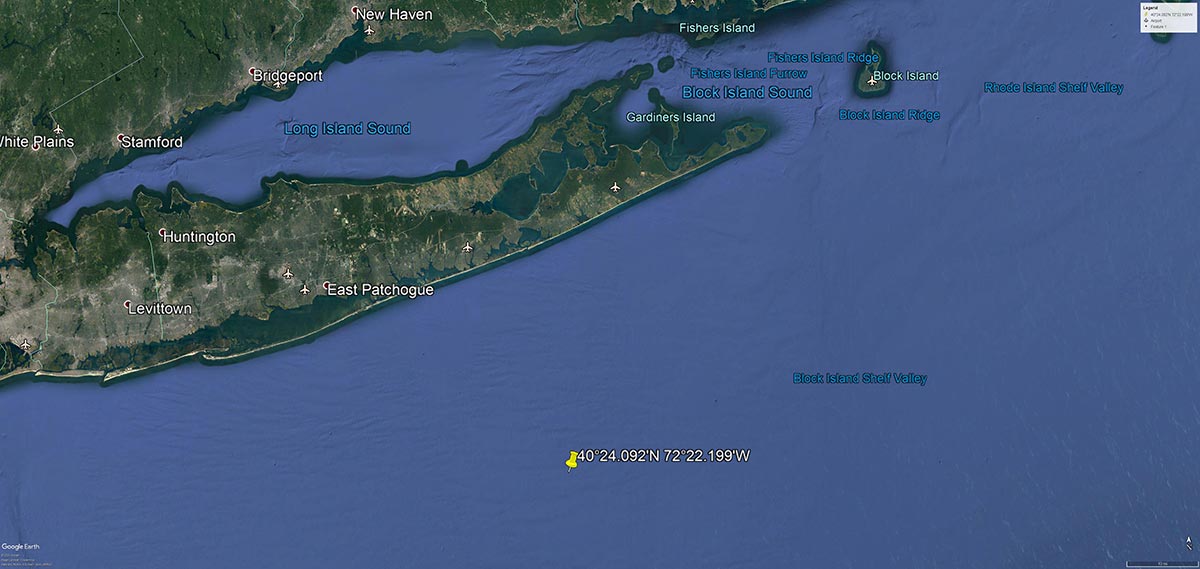
With a reputation of exceptional shark and bottom fishing, in recent years the Coimbra Wreck is better known for consistent action with bluefin tuna.
Built in 1937, the 423-foot oil tanker Coimbra was destined for duty shipping hundreds of thousands of barrels of fuel oil across the Atlantic for as many years as the Socony Vacuum Oil Company could get from the newly-built ship. Then, during the wee hours on the morning of January 15, 1942 just before her fifth birthday, a torpedo fired from the German sub U-123 hit her amidships, exploding the Coimbra’s cargo of 81,000 barrels of fuel into a giant ball of flames, and killing all but six crew members in the disaster.
Today, the Coimbra rests in three pieces 30 miles southeast of Moriches Inlet in 180 feet of water along the 30 Fathom Curve, roughly located at 40° 24.092′ N x 72° 22.199′ W. Her bow is facing east, the mid-section is leaning to port and her stern rests on her side.
The Coimbra has a reputation of exceptional shark and bottom fishing, but in recent years is probably better known for consistent action with bluefin tuna.
Huge schools of sand eels are the key to the tuna action. Many anglers have turned to jigging the fish, which can range anywhere from 30 or 40 pounds to a couple of hundred pounds. Some of the bigger fish have fallen to trollers in the early morning hours when the fish are more likely to be patrolling near the surface, but jigging is the way to go when the fish are feeding deep on sand eels during the day. Another key to finding tuna is to locate any draggers working in the general area of the wreck. Troll or jig in close proximity to them without getting in their way.
For sharkers, late June through July produces good numbers of big threshers, along with some makos and blue sharks. Whole mackerel and fresh strips of bluefish fillets always seem to have an edge here at this time of the year. There is usually a good shot at makos in late October and November when the sharks return to the area with a vengeance, feeding on an abundance of migratory species making a stop-over on the way to their winter destinations. Any live bait placed on a big circle hook should keep you busy during the fall run. You can send clam baits down on the wreck and catch just about anything to use for bait. Just make sure that it is of legal size and in season.
For the sinker bouncers in us, you won’t have a problem filling a tub with tasty ling during April and May, while late November and December feature plenty of jumbo sea bass for the taking. Expect some of the sea bass to be bitten off by sharks in the latter part of November. Fresh clam strips on standard hi-lo rigs work just fine for both the spring ling and the late fall sea bass.
Cod and pollock fanatics will have to wait until February to find the winter kings. A 5/0 octopus hook tied 4 feet above an 8- to 10-ounce sinker baited with a whole fresh skimmer clam should put at least a few cod in the box, while jigging 8- to 10-ounce diamond jigs off the bottom could very well produce some teen size pollock as well. Expect this action to last until April.
Looking for that 500-pound thresher, a 100-pound bluefin on jigging tackle, or that 40-pound cod? Then the Coimbra is the place to be for fulfilling such ambitions.


